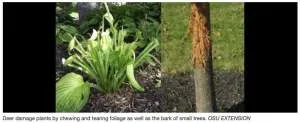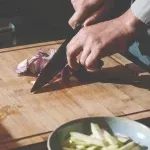(Columbus Dispatch) Most gardeners like to see wildlife frolicking in the yard, and will tolerate some low-level infrequent damage to certain garden plants in an effort to coexist with Bambi and Thumper. Nevertheless, when your favorite plants disappear one by one each night, you may find yourself looking for ways to minimize the damage caused by the critters that also call your landscape home.
As development shrinks the size of the natural habitat for many different species of wildlife in Greater Columbus, the number and frequency of interactions which gardeners have with wildlife continues to increase. And as gardeners and homeowners plant the flowers, shrubs, trees, vegetables and other plants that wildlife prefer to feed on, conflicts with wildlife will only increase.
Let’s look at some approaches to coexisting with wildlife in the garden and home landscape.
Identify the culprit
The first step when attempting to minimize wildlife damage in the garden or home landscape is to correctly identify the offending creature and learn about the habits of the animal. This information is essential to evaluating the effectiveness of potential solutions to the problem.
Many times the specific type of damage experienced will help to identify which animal is the culprit. With their sharp upper and lower incisors, rabbits cause damage to plant stems that appear as sharp, clean cuts at a 45-degree angle. Deer, however, only have lower incisors and the damage they cause to plant stems and leaves tends to be jagged, uneven and torn.

The location on the plant where damage occurs can also provide clues, as damage by rabbits is typically confined to the lower 18- to 24-inches of the plant, while damage higher up on plants is typically caused by deer.
The specific plants damaged can also provide clues as certain plants are preferred by specific animals. Hostas are like candy to deer, who will seek out these plants and repeatedly graze them down to ground level.
In the vegetable garden, rabbits prefer carrots, peas, beans and beets but rarely feed on corn, cucumbers, squash, tomatoes or peppers. Half-eaten tomatoes and melons still attached to the plant are usually the work of chipmunks, while groundhogs love the tender young foliage of squash, tomato, pepper, potato and even corn.






